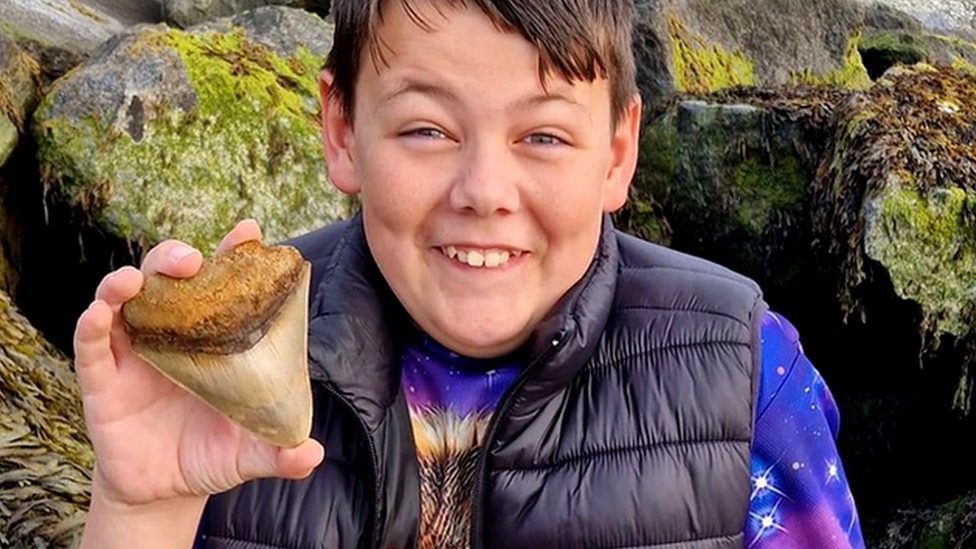Megalodons were 'longer and thinner' than great white sharks
- Published
- comments
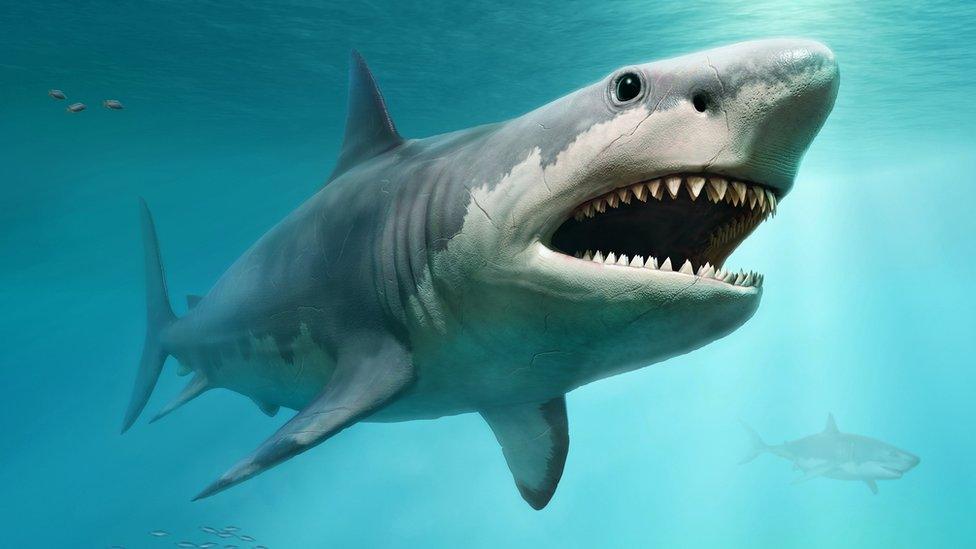
An artist's impression of a megalodon
You might have to forget what you think you know about the ancient Megalodon.
This fearsome ocean predator roamed the world's seas between four million and 20 million years ago.
A lot of what we know about them is thanks to the discovery of their huge fossilised triangular teeth.
Because their teeth were similar to the teeth of modern-day great white sharks, researchers believed megalodons were similar in shape too, just about three times bigger.
A new study suggests that is not the case and they were probably much slimmer and longer than scientists first thought.
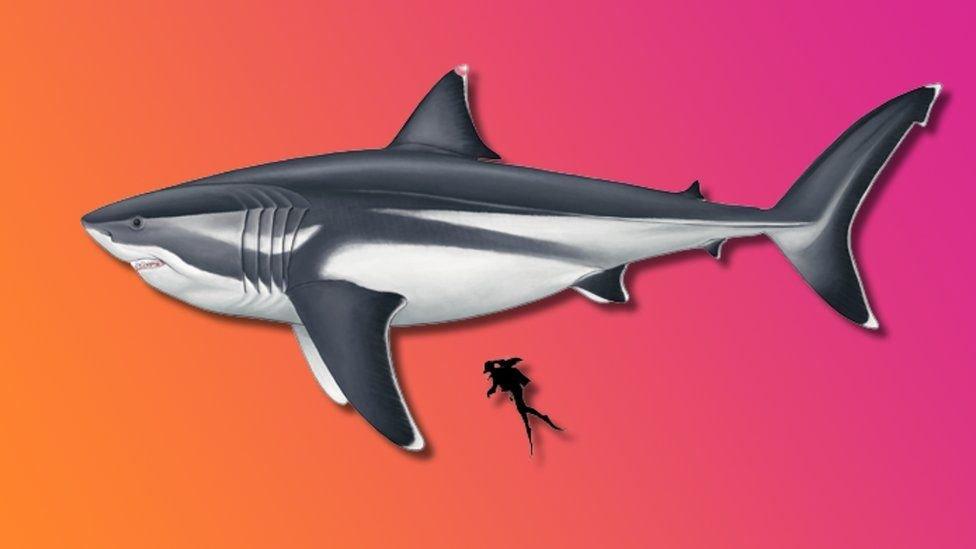
This is how big a megalodon was thought to be compared to a human, but it may have been longer and slimmer according to new analysis
A megalodon's skeleton isn't made from bone. Instead it's made from soft cartilage like a shark and does not fossilize very well.
Therefore, most of the fossils from the creature are teeth and a few vertebrae - bones that interlock to create a spine - as these are partially mineralised.
A team of 26 shark experts has been looking at an incomplete set of megalodon fossil vertebrae and noticed it was more incomplete than they thought.
From the way the vertebrae got smaller from the head to the tail, they concluded the megalodon must have been longer and more slender.
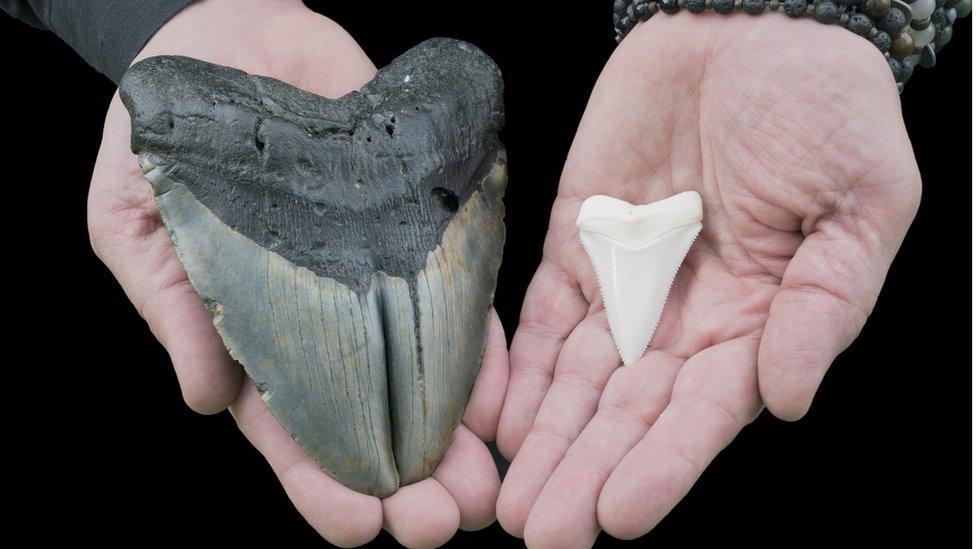
Comparing a Megalodon tooth to a great white shark tooth shows the difference in scale between the two creatures
This new theory on the shape of its body would mean it couldn't hunt in the way we thought either.
A slimmer body wouldn't create as much power to ambush its prey and would need to take a different approach.
Not all researchers agree with the findings and stick by the stockier model.
As no full skeleton has ever been found, we may never know for sure what a megalodon looked like.
One thing these findings don't change is that the megalodon was still a fearsome beast that swam in our seas all those years ago.
- Published9 September 2019
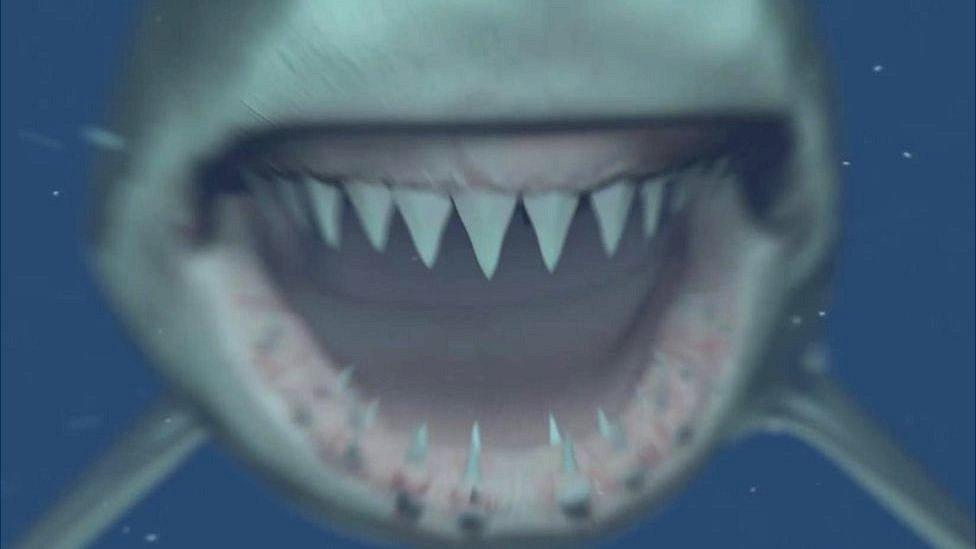
- Published4 August 2023
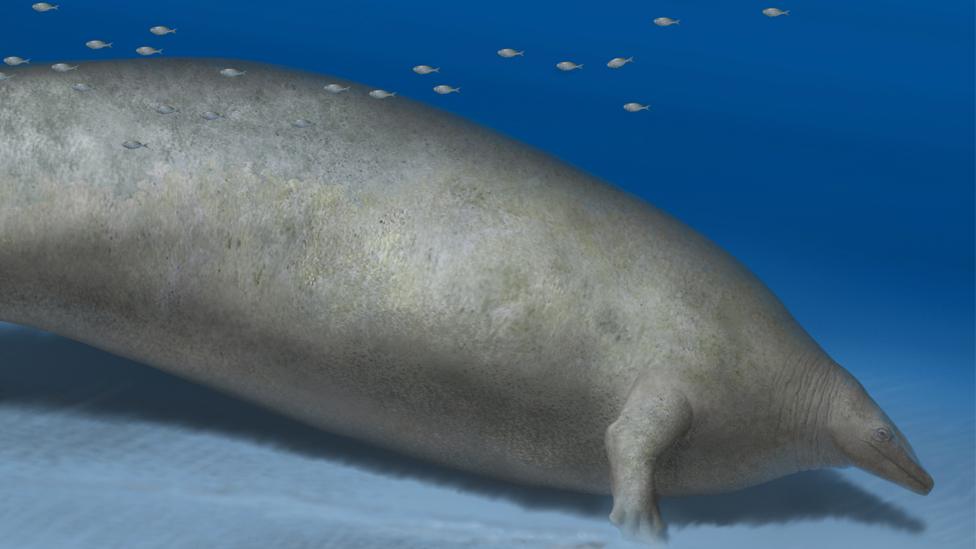
- Published3 August 2023
